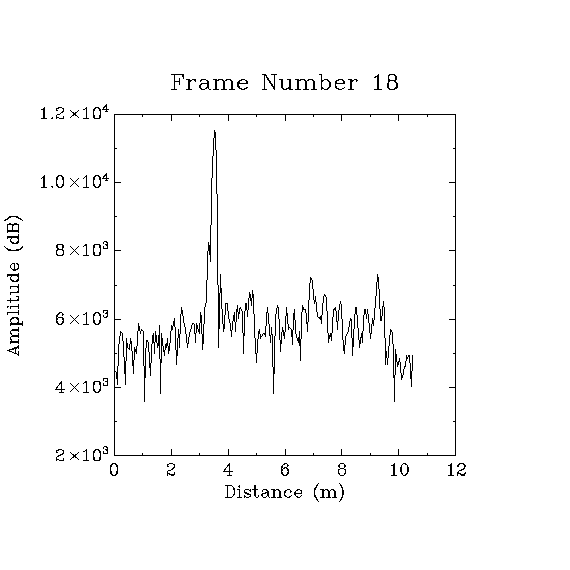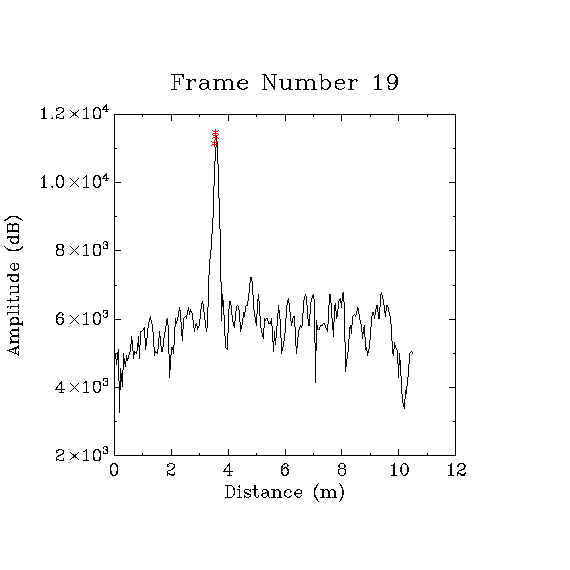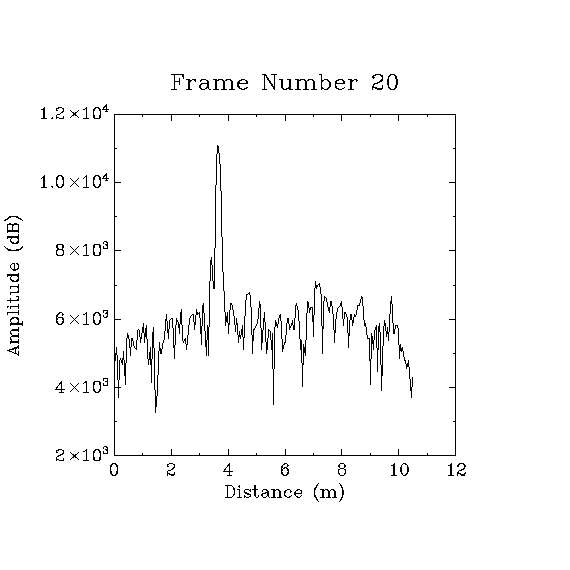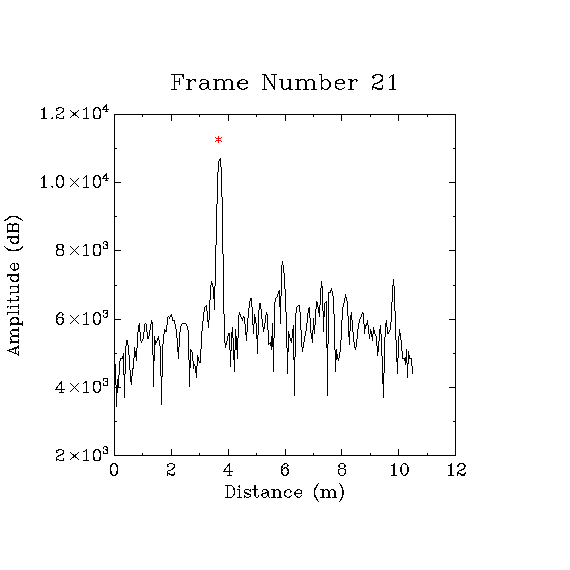Other Parts Discussed in Thread: MMWAVE-STUDIO
Hi,
I have a few questions concerning velocity acquisition.
1. It appears that velocity information is only available from the objOut structure. It appears that this structure is populated by the following sequence of functions:
MmwDemo_dataPathWait1D(dataPathObj)
MmwDemo_process2D(dataPathObj)
MmwDemo_processCfar(dataPathObj, &numDetectedObjects)
MmwDemo_processAngle(dataPathObj)
Correct? It appears that there is no other alternate (convenient) approach to obtain velocity information for a detected object. Correct?
2. Attached are some images where rangeDopplerLogMagMatrix (dopIdx=0) data is plotted along with the peakVal and rangeIdx data from the objOut structure. Even though the downrange profile appears to have a single peak, several detected objects appear for the same single (?) peak and their peak values can be sufficiently different from the down range profile values. I have reviewed the documentation in the doxygen directory and I am still fuzzy. Can you please provide additional guidance on why the multiple peaks and peak values in the objOut structure appear to be inconsistent from the rangeDopplerLogMagMatrix data? In some cases, a frame may have no detected objects but clearly, there should be. If I lower the threshold value, more detected objects are found (as expected) and their peak values have a greater variation in peak value.
3. The cfarCgf and peakGrouping parameters control what I observe in the above block. I have used these parameters
cfarCfg 0 2 8 4 3 0 5120
peakGrouping 1 1 1 1 229
Choosing alternate parameter values to correlate the data in rangeDopplerLogMagMatrix and objOut appears to be elusive. Can you please provide any guidance for this?
I guess what I am looking for is a single peak value and corresponding velocity for each peak in a rangeDopplerLogMagMatrix profile.
Thank you.
Al





